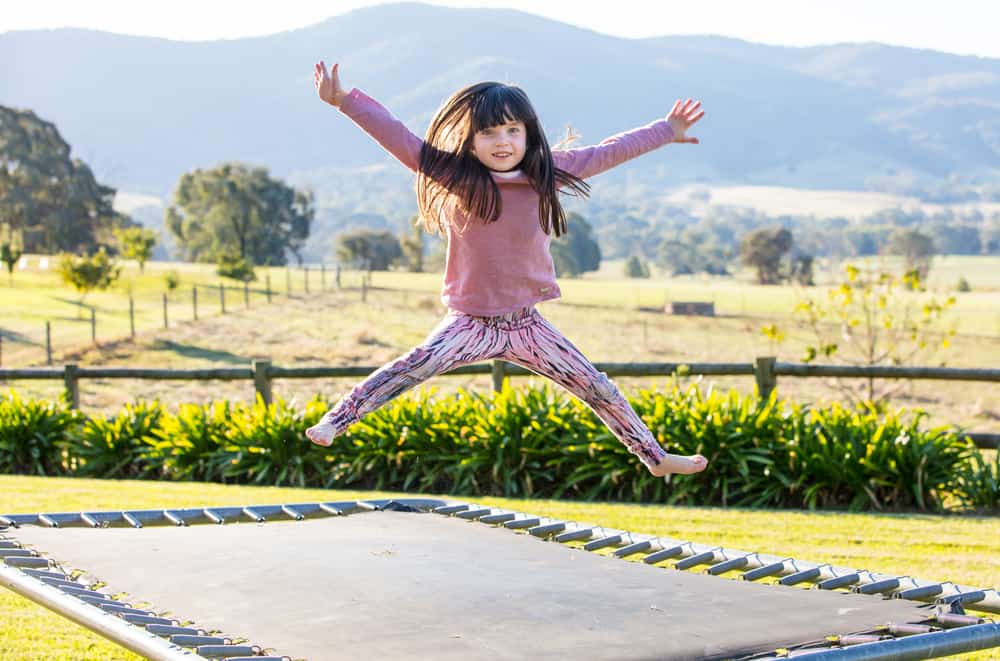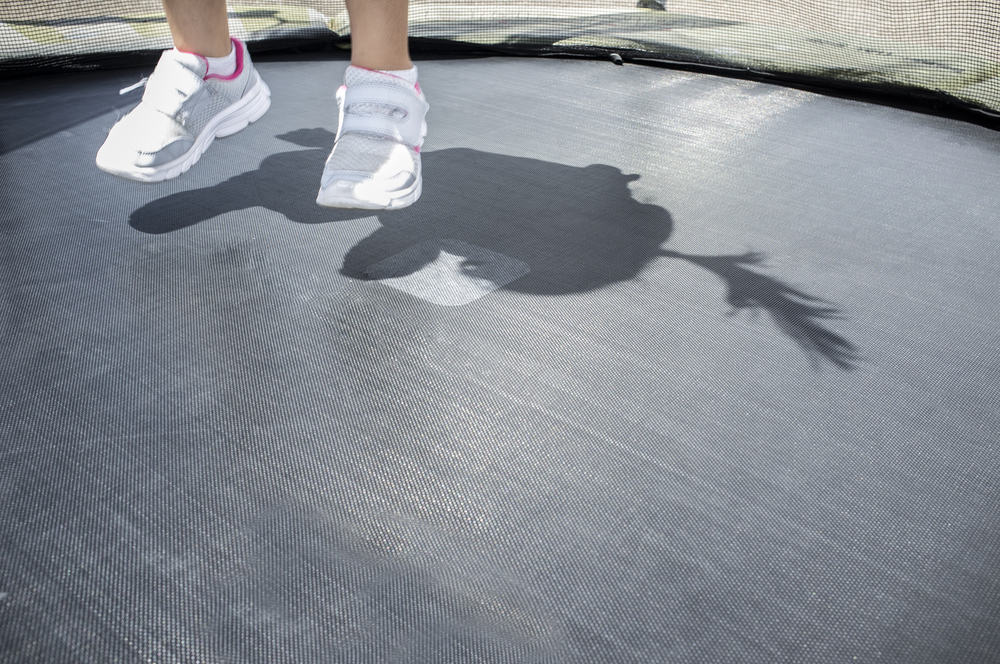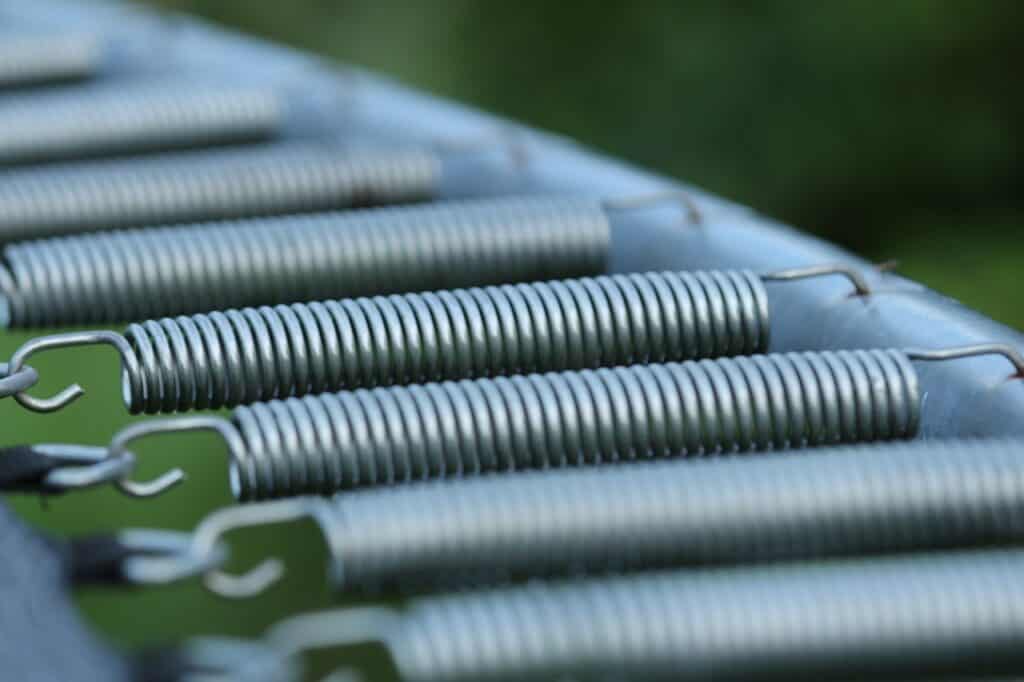In-ground trampolines are becoming more and more popular for their numerous advantages! They’re attached to the ground and cause much less fuss than the usual, over-ground trampolines.

Now, if you’re reading this, you’re probably considering buying one for your family and kids to jump around and have fun with, but before you make that leap, there are some crucial things you should keep in mind.
So, whether you want a source of fun and joy or new aesthetic addition in your backyard, make sure to read this in-ground trampoline buyer’s guide!
Why is an In-Ground Trampoline so Great?
Zero-climbing
In-ground trampolines are a lot easier for both adults and small children to hop onto, unlike ones up on stilts. You don’t need to install step stools and stairs to reach the mat. You just walk onto it and start having fun!
More Decorative Options
In-ground trampolines will give the same bounce with more decorative options. While regular trampolines have the ability to be decorative, they still don’t have the same aesthetic possibilities in-ground ones have in your backyard landscaping.
Safer
The higher the tramp is, the more dangerous it gets for children, and that’s why in-ground trampolines are considered a safer version of the above-ground ones. However, it doesn’t mean that it’s 100% safe, as it’s designed to launch a person up to 10ft off the ground.
Freedom of Movement
Having an in-ground trampoline allows your children to play as much as they want without the fear of tumbling to the ground.

Things to Consider When Buying an In-Ground Trampoline
1. Installment Considerations
- To safely install it, it must be placed in a location that allows it to dig for a minimum of three to four feet without hitting any rocks or utilities (electrical, gas, or plumbing). And call your local city planning office before installing to ensure you won’t have a problem.
- Not only that, but you also have to consider how rainwater or even gardening water will drain out from underneath your tramp. Insect infestations and rust can be caused by stale and stagnant water, so you need to be extra careful with that.
- In-ground trampolines are naturally different from regular ones. Kids need enough run-off area (ideally 6 ft) around the trampoline, so they don’t come to anything dangerous like fences or walls.
- Make sure there’s no high water table. You can do this by digging a trial hole about 3ft deep, then wait for a day to see if it fills up. It’s always a bad idea to install an in-ground trampoline in a flood-prone or water-logged area.
2. You Need to Have the Proper Tools for Installment
If you’re going to install an in-ground trampoline in your backyard, you’ll need to get these tools first:
- Excavator
- Shovel
- Hammer
- Drill
- Level
- Tin Snips
- Two wrenches that fit the bolts and nuts
- Pencil/Pen
- Spray Paint
- Measuring tape
- Tamper
3. Strong Frame
Double frames are the most durable frames in the market. They last the longest and allow the greatest user weights.
Some in-ground trampolines feature a single frame piece, similar to an above-ground trampoline with short stubby legs, or the frame is integrated into the retaining wall. However, they’re not stable and stiff like a double metal frame with an attached retaining wall.
A double frame consists of a top frame and a bottom frame linked at different points by steel uprights.

4. Good Air Flow System
To stop trapped air compromising a great bounce, your in-ground trampoline has to have an adequate airflow system.
Vented jump mats can be useful, but the small holes in the venting can become clogged with moisture and wet weather. They are also made of a weaker material, making them more prone to tearing.
Vented pads, which are big holes cut into thick, high-density foam (for increased spring protection) that enable air to flow freely, are arguably the best airflow system.
5. Long Springs
For an in-ground trampoline bigger than 8ft if it’s circular or 6ft x 10ft if it’s rectangular, we recommend that you look for a trampoline with springs at least 8 inches long.
Some manufacturers include fancy spring connections, such as diagonal or zig-zag spring attachments, but the strength and coil of the spring are essential. You want a spring that doesn’t overstretch, so try and find a brand that provides a commercial-grade spring. This will be stronger and less prone to sagging in the long term.

6. Strong Jump Mat
While some designs claim to have a very bouncy vented jump mat, the little holes that create the vent might weaken these mats.
Look for brands that provide a commercial-grade jump mat, similar to those seen at trampoline parks. This sort of jump mat provides a terrific bounce while still being quite durable, which is why trampoline parks like to use it.
Instead of a vented mesh mat, go for a durable polypropylene/ permatron mat. The jump mat will not pull away from the d-rings because of the many rows of stitching around the edge and an extra piece of spring guard material (which lies over the springs and beneath the pads) for additional protection.
To ensure long-term pad durability, don’t forget to clean the jumping pad regularly.
7. Drainage Solution: Drain Pipe
This method is possible under one condition – if it’s possible to take a 4-inch drain pipe from the hole bottom to a lower area in the garden, like a ditch, for example.
This drain pipe solution is excellent — the drain is easily installed, inexpensive, and doesn’t require any electrical work!
Bottom Line
To sum up, when it comes to safety, freedom of movement, easy use, and decorative options, an in-ground trampoline can be a great substitute for an above-ground one.
However, it comes with special considerations to buy, install, and use. So make sure to follow this guide, and you’ll be good to go!
